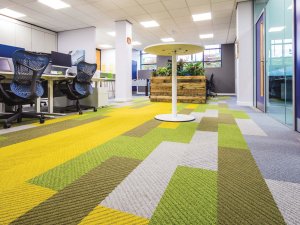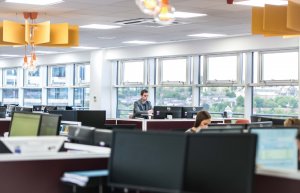In a lecture at Yale School of Management last year,
Prof. Richard Foster explored what creativity means concluding that: “Creative solutions are insightful, they’re novel, they’re simple, they’re elegant, and they’re generative. When you find one creative idea, more often than not it triggers other ideas in the same fashion.”
Creativity is the
sine qua non of the business world and something that many business owners and c-suite executives look for in their staff to help their companies innovate and evolve. Creativity is not something that can be forced or that is likely to grow in highly restrictive surroundings, and a traditional meeting room can be a creativity killer that doesn’t cultivate productive collaboration.
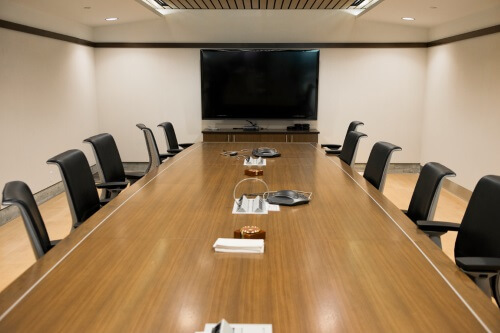
1. Think outside the room
Thanks to advances in mobile technology, meetings no longer have to take place in a designated room.
Oliver Marlow, Co-Founder and Creative Director of Studio TILT, believes that flexibility in social workplaces is the key to encouraging creativity: “Social workplaces are designed based on how surroundings affect mood, behaviour and the ability to create. They allow for a flexible space that can be used to gather varying stakeholders together.”
When you’re thinking about designing a meeting room space, go beyond the traditional boardroom and projector set-up and focus on the social interactions taking place instead and how these can be encouraged. As
Oliver Marlow says: “It is a shift from space defined as a “container” to space as an “enabler”. It looks beyond the monumentality of working environments to something more fluid, humble, connected, inspiring and healthy.”

Image:
www.incomediary.comThinking outside the room could mean installing a table tennis table next to a conference table for bursts of gameplay in between meetings,
like Dreamhost in La Brea, California above. LivingSocial’s offices in Washington D.C. feature a breakout area with a projector, ideal for an informal meeting, next to a retro games machine for impromptu breaks.
For a private space with a room, forget a glass-walled office and opt for a caravan instead to spark playfulness and creativity, just like Google’s Amsterdam office which was designed by D/Dock.
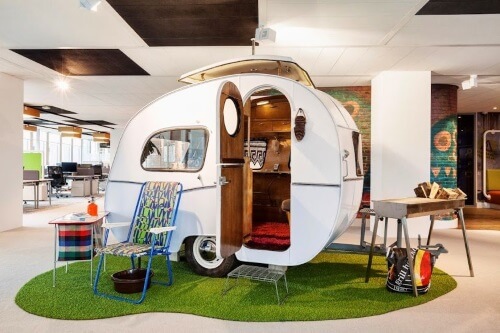
Image:
nieuws Meeting ‘pods’ create a more informal meeting place without anything too ‘wacky’; and Dale Office’s project to redesign
Visualsoft’s offices includes flexible to create a campus-style layout. This design means staff can collaborate in quiet, semi-private and informal areas.

Image:
Dale Office Interiors
Thinking about a new design for your office but don’t know where to start? Download your free guide here.

2. Think outside the building
Chris Kane, from the spaces and places advisory service
CK Associates, comments in his blog,
Smart Spaces and Places, how employees should be able to work beyond the four walls of their company’s building: “We need to adjust from a purely building centric focus to a wider one focused on people and enabling them to work anywhere and anytime… The workplace should no longer be regarded as a place to contain the people who work there, but as a base from which they are free to explore the new 21st century world of possibilities.”
Why should a meeting take place in your workspace at all? Sometimes a new location can spark conversations and creativity. Companies can rent temporary office space, including meeting rooms, with companies such as
WeWork all over the globe, so meetings don’t even have to take place in the same country!
Meetingrooms.com and
Meetingsbooker.com allow people to book a space as varied as a room in a country manor or a hotel, or more traditional offices in venues across the UK and the globe. So if your team would benefit from a trip to the country to inspire them, you can book a meeting room by the hour or for the day with a few clicks online.
CitizenM is a network of hotels that specialise in creating living room-style luxury, and their meeting rooms follow this ethos of cosy creativity. Their
SocietyM meeting rooms offer a stylish space to collaborate which is worlds away from a regular boardroom set-up.
3. Comfort is key
Traditional boardrooms focus on formality, with people sitting on stiff backed chairs around a grand table. However, it’s unlikely people will be able to reach their creativity potential in these corporate surroundings, after all, when was the last time you felt relaxed and open to ideas and creativity sat around a boardroom table?

Image:
www.triflecreative.com There’s no reason why your meeting room can’t be an inviting haven of comfort and cosiness, and therefore the ideal setting for people to relax and share ideas.
Moo, the business stationery and promotional experts in London, has a number of meeting rooms named after print colours.
The White room looks like a comfortable lounge with cosy chairs and a funky rug set against a white and wood background.
Etsy’s conference rooms feature vintage-style mismatched furniture, plush upholstery and bright wall art to create a
comfortable, homely place to share ideas.

Image:
www.etsy.comMeeting rooms can also masquerade as dining rooms, and as people relax and unwind over food and drinks, their ideas can fully flow. Google’s East Coast US headquarters ensures that every area of the office is
within 150 feet of a food source. What better way to hold an impromptu meeting and share ideas than in an in-house restaurant or kitchen? Communal spaces encourage “
unplanned collaboration”, to coin a phrase from Steve Jobs, and where food is available, people are more likely to linger and share a meal.
4. The writing on the wall
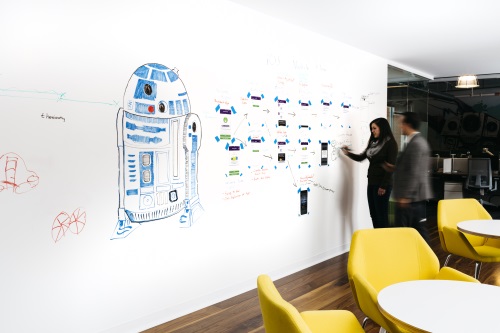
Photo by Michael Piazza Photography, courtesy of
IdeaPaint How many meetings have you been in where participants scribble away in their notebooks with their heads down? This kind of set up isn’t conducive to encouraging creativity and can mean people just write down what’s being said, rather than feeling invested and engaged in the meeting.
IdeaPaint specialises in dry erase surfaces which can be installed as walls or tables to enable a more social way for people to scribble their ideas down.
An article in
The Washington Post covering future trends for offices predicts walls you can write on will be commonplace, a trend that has partially come about due to the reduction in paper use in offices because of advances in technology. Author Jonathon O’Connell comments that a change changes such as this “emanates from the core mission of fostering creativity and collaboration”.
Path combines the trends for write-on walls and comfort with its meeting rooms which feature
large couches and wall-sized writing boards, below.

Image:
Geremia Design
5. Get natural
According to
workspace strategist and thought leader Kursty Groves, welcoming nature into the workplace is one of the best ways to let creativity bloom: “Nature has a profound impact on humans. Sunlight, fresh air and natural surroundings positively affect people’s sense of wellbeing and happiness. Even a view of nature is powerful… And office workers have been shown to experience lower mental fatigue and stress when nature is present.”
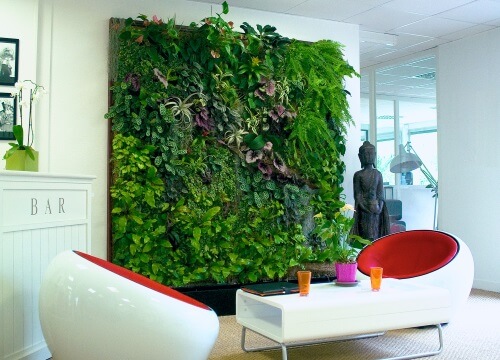
An
article published in The Guardian by Shiv Malik also highlights the importance of greenery in the office: “Dr Chris Knight from Exeter University and his fellow psychologists, who have been studying the issue for 10 years, concluded that employees are 15% more productive when “lean” workplaces are filled with just a few houseplants, as employees who actively engage with their surroundings are better workers.”
Even if you work in the middle of a city or an industrial area and long for a green view, there are options to bring nature into your office which go beyond pot plants.
Internal landscaping involves bringing the outdoors indoors and making office spaces a more welcoming and greener place to be. Living walls are self-sufficient gardens attached to a vertical frame, into offices. By including a living wall into your meeting room you can create a focal point in the room and improve the well-being of your team, as well as igniting their creativity.
For creativity to thrive in meetings, the space needs to be innovative enough to allow ideas to flow freely and to encourage people to think in new ways, without limits. Four white walls and a boardroom table and chairs just aren’t going to cut it in companies that rely on creative ideas to keep pushing the boundaries of what they do. If you want to boost the creativity in your workplace, then look at the areas where you expect ideas to flow and see if these can be redesigned to foster creativity and collaboration.

